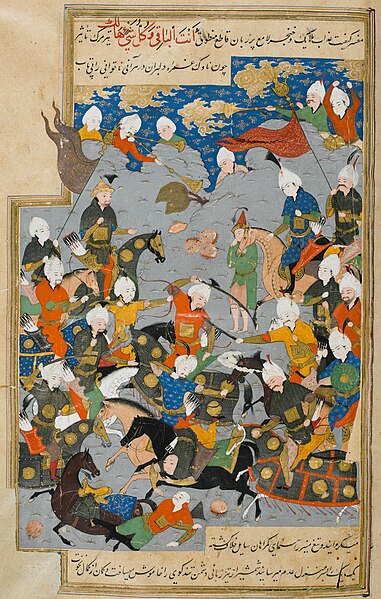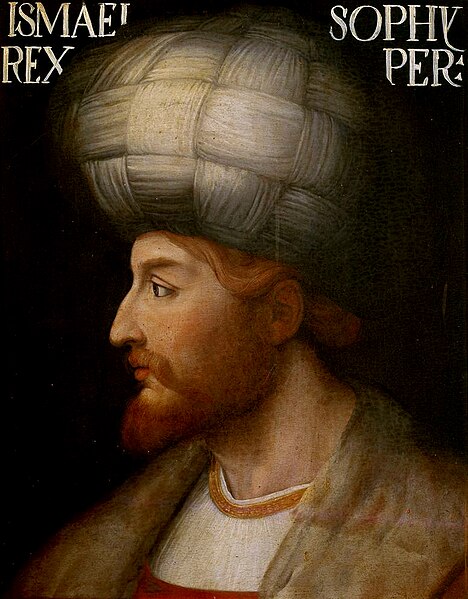Tahmasp I was the second shah of Safavid Iran from 1524 until his death in 1576. He was the eldest son of Ismail I and his principal consort, Tajlu Khanum.
Tahmasp I
Tahmasp Mirza holds an audience, together with the grand sayyeds and theologians, in the Bagh-Shahr in Balkh, on his arrival as governor of Khorasan. Album leaf attributable to Mo'en Mosavver, from a copy of Bijan's Tarikh-i Jahangusha-yi Khaqan Sahibqiran (A History of Shah Ismail I), Isfahan, c. 1670
Accession of Shah Tahmasp I to the throne, folio from Kholassat ot-Tavarikh by Ahmad Monshi Ghomi
Battle between Tahmasp I and Ubayd Allah Khan on 24 September 1524, folio from Kholassat ot-Tavarikh by Ahmad Monshi Ghomi
Safavid Iran or Safavid Persia, also referred to as the Safavid Empire, was one of the largest and long-standing Iranian empires after the 7th-century Muslim conquest of Persia, which was ruled from 1501 to 1736 by the Safavid dynasty. It is often considered the beginning of modern Iranian history, as well as one of the gunpowder empires. The Safavid Shāh Ismā'īl I established the Twelver denomination of Shīʿa Islam as the official religion of the empire, marking one of the most important turning points in the history of Islam.
Mannequin of a Safavid Qizilbash soldier, showing characteristic red cap (Sa'dabad Palace, Teheran)
Ismail declares himself "Shah" by entering Tabriz; his troops in front of Arg of Tabriz, painter Chingiz Mehbaliyev, in private collection.
One of the first actions performed by Shāh Ismā'īl I of the Safavid dynasty was the proclamation of the Twelver denomination of Shīʿa Islam as the official religion of his newly-founded Persian Empire, causing sectarian tensions in the Middle East when he destroyed the tombs of the Abbasid caliphs, the Sunnī Imam Abū Ḥanīfa al-Nuʿmān, and the Ṣūfī Muslim ascetic ʿAbdul Qādir Gīlānī in 1508.
Ismail's battle with Uzbek warlord Muhammad Shaybani Khan in 1510, on a folio from the Kebir Musaver Silsilname. After the battle Ismail purportedly gilded the skull of Shaybani Khan for use as a wine goblet.








